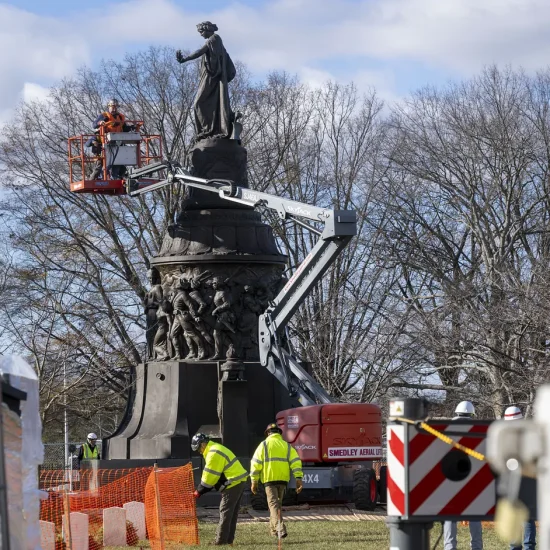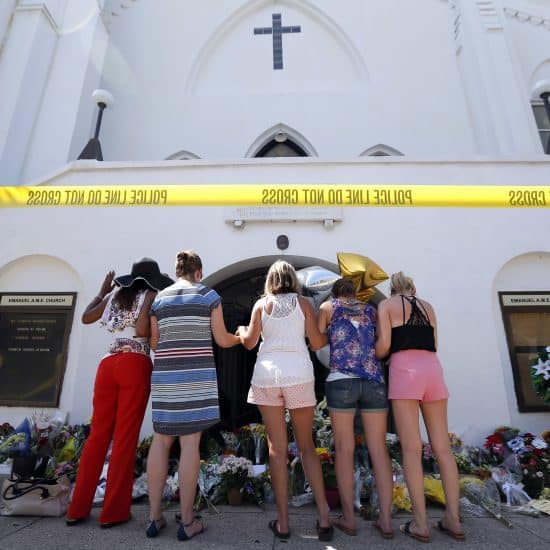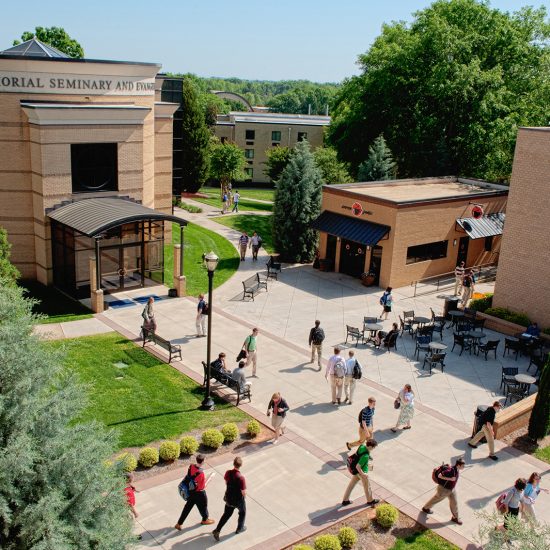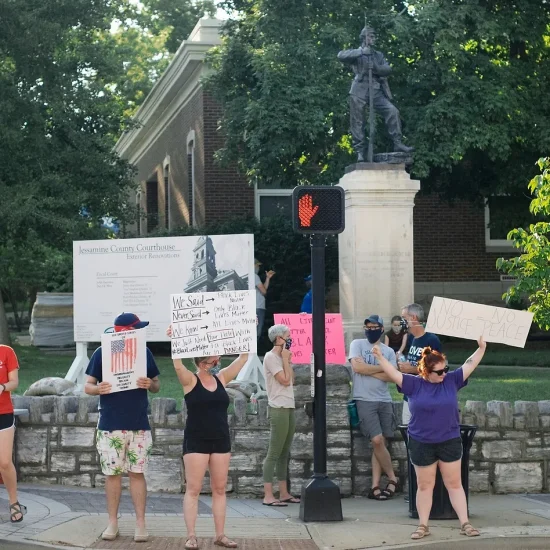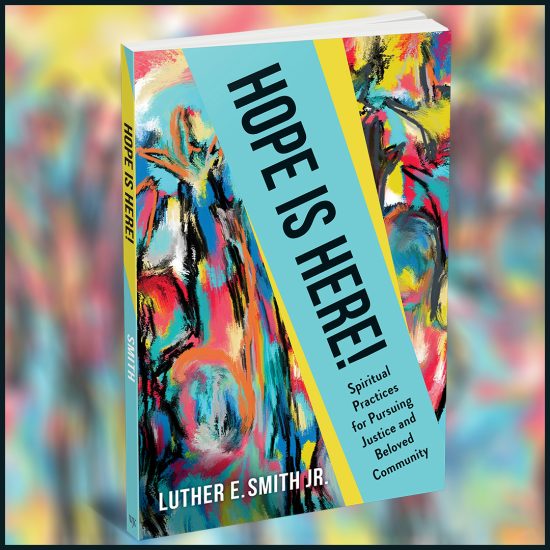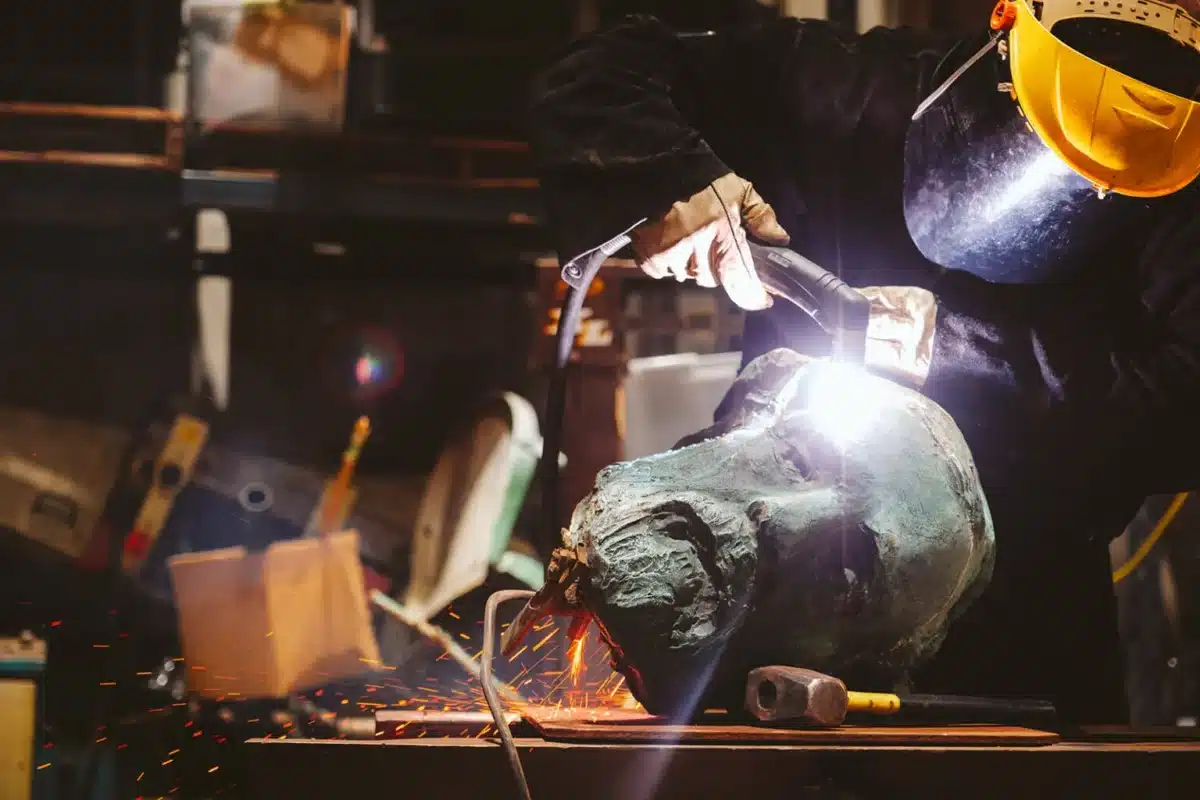
(RNS) — Community leaders in Charlottesville, Virginia, have melted down a statue of Confederate Gen. Robert E. Lee, the removal of which spurred violent protests in 2017 that resulted in the killing of a counterprotester by a white supremacist.
Among the leaders of the project, known as the Swords Into Plowshares initiative, is Jalane Schmidt, a religious studies professor at the University of Virginia, where throngs of protesters marched with torches the night before the August 2017 Unite the Right rally.
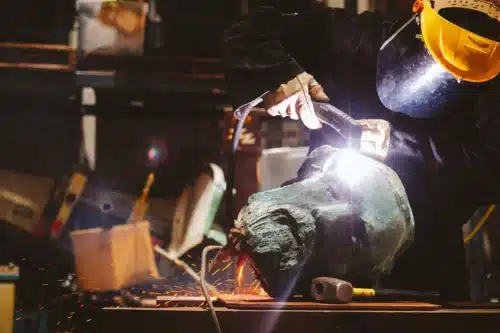
A foundry worker using a plasma torch prepares to cut the head of Charlottesville’s bronze monument of Robert E. Lee in preparation for melting the statue, Oct. 21, 2023. Photo © Eze Amos
On Thursday (Oct. 26), Schmidt, who is also director of the Memory Project at UVA’s Karsh Institute of Democracy, an effort launched in the aftermath of the Charlottesville violence, opened a news conference by reciting Scripture that calls on believers to beat swords into plowshares.
“We’re here to announce that we’ve melted the Lee statue,” Schmidt said, to applause. She later added: “Creativity and art can express democratic, inclusive values. We believe that art has the potential to heal.”
Organizers said they plan to hire an artist to use the bronze from the statue to form a new art piece, although details have yet to be worked out.
The announcement is the coda in a yearslong legal battle over the statue. After the white supremacist rally ravaged the city, local elected officials voted unanimously to donate the statue in late 2021 to the Jefferson School African American Heritage Center, a local Black-led nonprofit that funds the Swords Into Plowshares initiative. Shortly thereafter, two groups — Trevilian Station Battlefield Foundation, which oversees a Civil War battlefield elsewhere in Virginia, and the Ratcliffe Foundation, which manages a museum in Russell County with ties to a Confederate general — filed suit in an attempt to halt efforts to melt the monument down.
But the groups, both of which had submitted unsuccessful bids for the statue, ultimately failed in court. A judge removed the Ratcliffe Foundation from the case in May and dismissed most of Trevilian Station Battlefield Foundation’s case in July. Trevilian Station effectively ended its legal efforts later that month.
Andrea Douglas, executive director of the Jefferson School African American Heritage Center, said during the news conference that project leaders are just beginning the process of selecting a jury to help decide which artist or group will create the replacement artwork. They hope to gather sculpture specialists, historians, and “people who understand our narrative deeply,” she said.
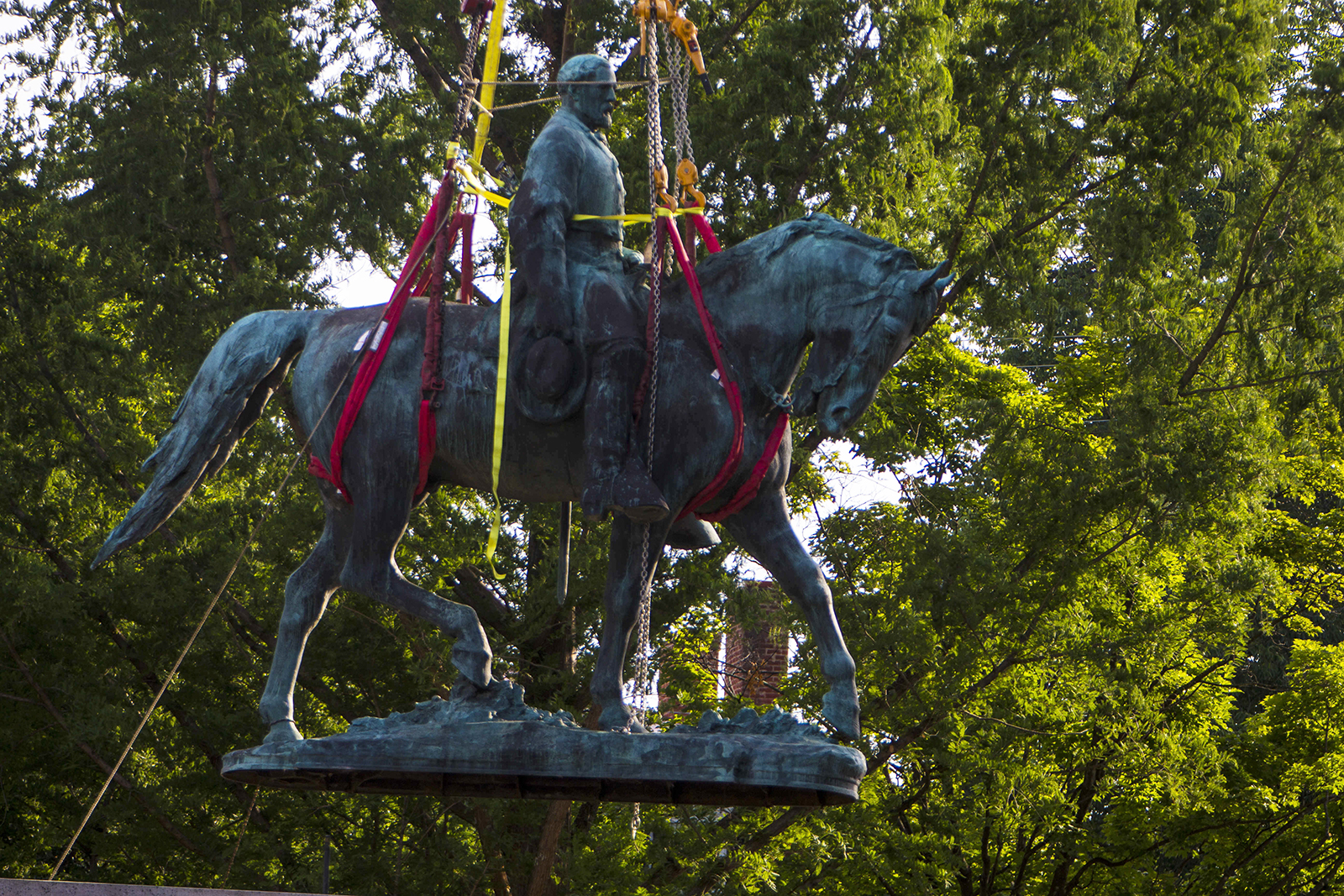
Workers remove the monument of Confederate Gen. Robert E. Lee on July 10, 2021, in Charlottesville, Va. The removal of the Lee statue follows years of contention, community anguish, and legal fights. (AP Photo/John C. Clark)
The destruction of the statue, which was removed from a city park in July 2021, actually began over the weekend: The head was melted down in an undisclosed location, as was the sword.
The Rev. Isaac Collins, a United Methodist minister in Charlottesville, was part of a small group allowed to witness the melting of the statue. He told Religion News Service he spoke to the assembly shortly before the process began and quoted Psalm 135:15-18, which states “the idols of the nations are silver and gold, the work of human hands. … They have mouths, but they do not speak. … Those who make them, and all who trust them, shall become like them.”
Collins said he had used the Scripture passage before in a 2019 public Bible study in Charlottesville that focused on racism because it helped “define the role that these statues played as idols for white supremacy.” He also reflected on events surrounding the erection of the statue in 1924, when the Klu Klux Klan staged cross burnings in the city and organized a march through a predominantly Black neighborhood.
“All of these things were connected in creating a culture of death that the Lee statue symbolized,” he said. Melting it down, he explained, was a literal enactment of Isaiah 2:2-4 — turning “swords into plowshares.”
“It’s taking that culture of death and repurposing it for the sake of life, telling this very long story of resistance to that white supremacist culture, and giving us a vision of how to move forward,” Collins said.
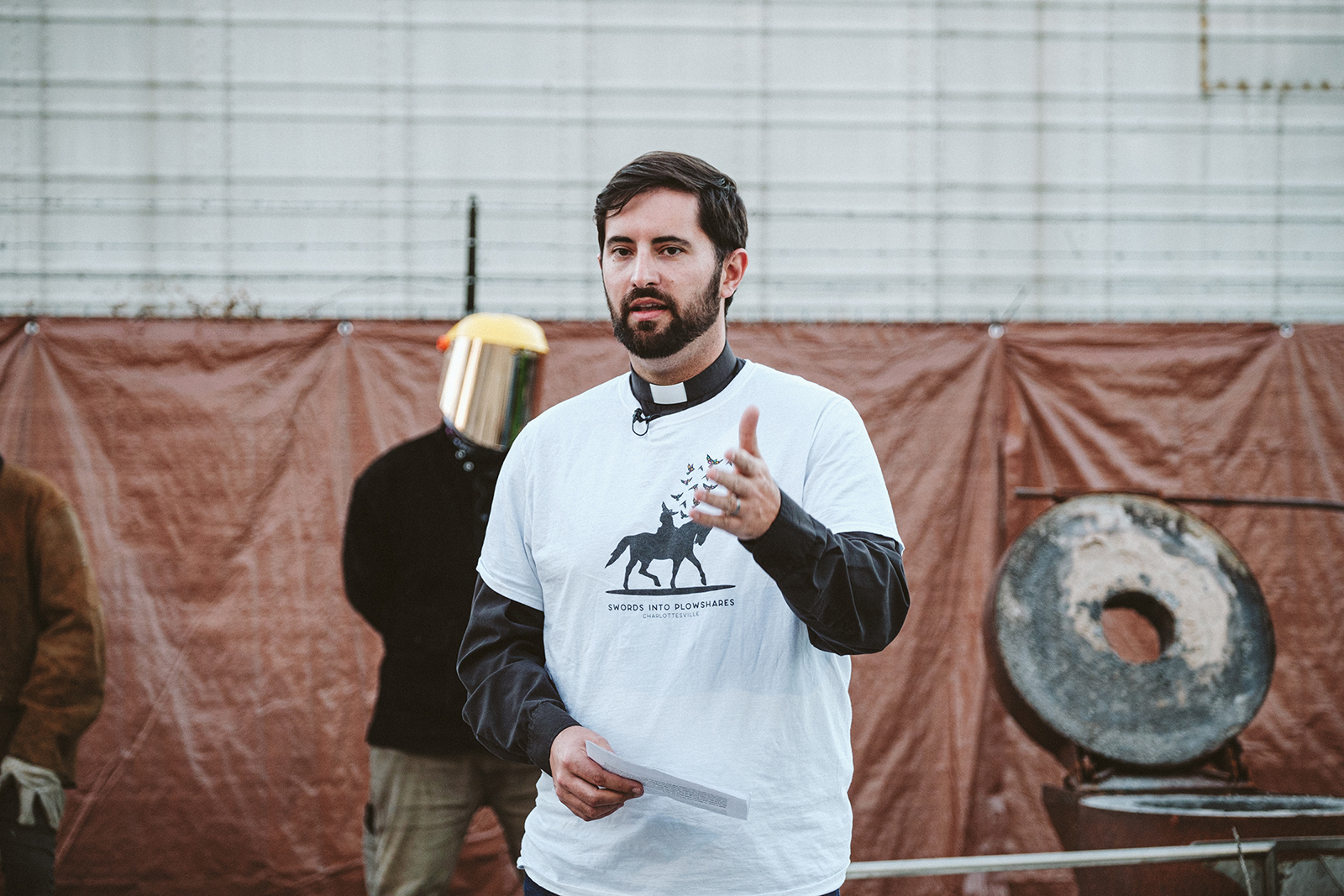
The Rev. Isaac Collins speaks at a foundry about the biblical meaning of “swords into plowshares” while a worker prepares to melt Charlottesville’s bronze monument of Robert E. Lee in a furnace, Oct. 21, 2023. Photo © Eze Amos
Schmidt, who also attended the melting, described the event as a somber affair, saying, “It was not celebratory.” Asked how she approached the moment as a religious studies scholar, she recalled the history of iconoclasm and the seriousness of dismantling objects imbued with meaning by others, be they secular or religious. That includes Confederate statues: When some monuments were erected in the early 20th century, she said, clergy participated in the proceedings.
Fast-forward roughly a century, and Charlottesville’s monument to the Confederate general has consistently proved to be a magnet for hate. Even after the Unite the Right rally, Schmidt noted, people showed up to “protect” the statue, patrolling the park where it stood.
“The most meaningful part, for me, was when the sword went into the furnace,” she said.
At one point, Collins said, artisans sliced the head of the Lee statue into strips with blowtorches, then aligned them facing outward toward observers along the edge of the crucible. The face of Lee changed colors as the flames super-heated the metal, turning the surface’s green patina into an ashen gray. As they finished, workers struck the pieces with a hammer.
“It broke apart so easily,” Collins said.
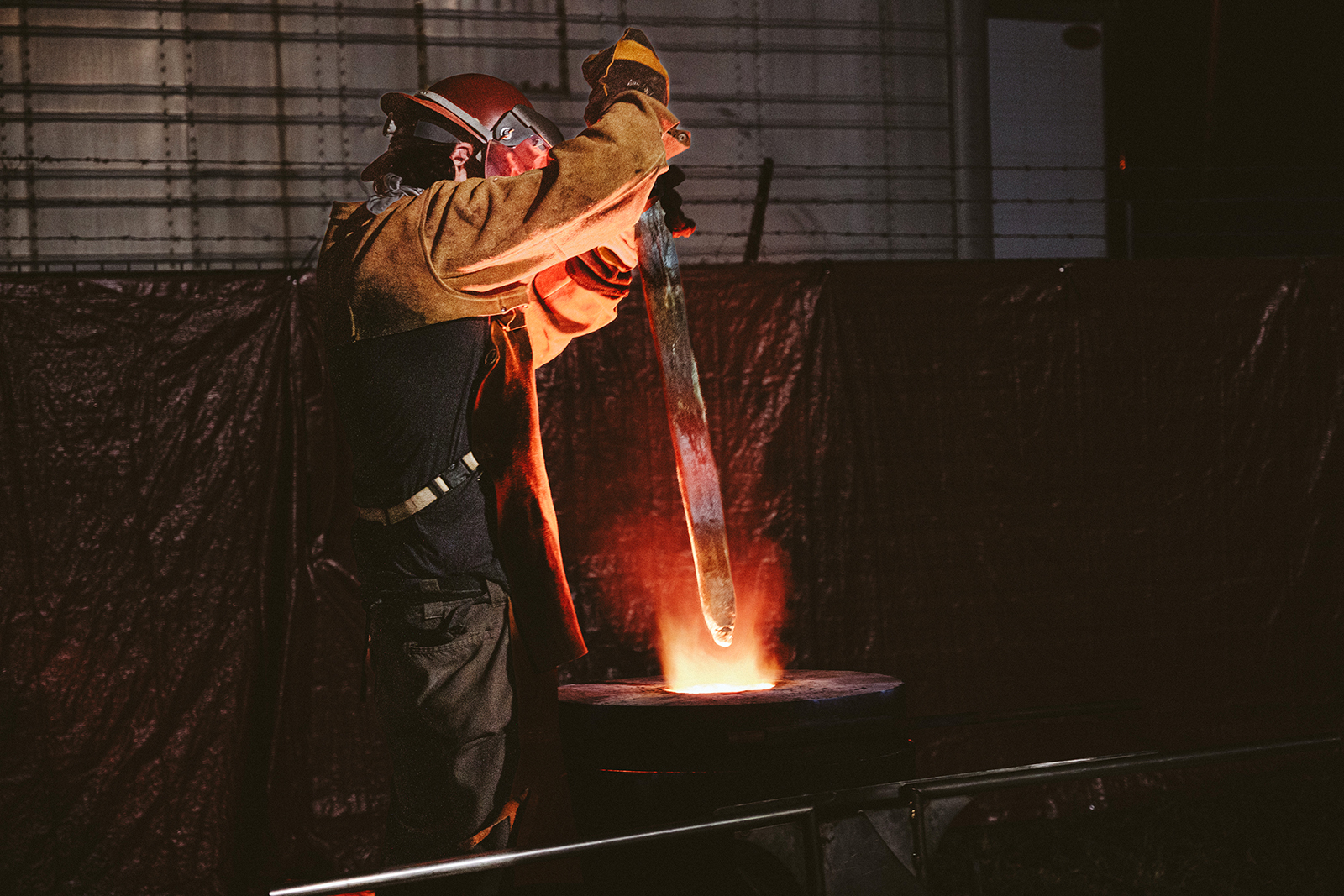
A foundry worker places the sword from Charlottesville’s bronze monument of Robert E. Lee into a heated furnace to melt it, Oct. 21, 2023. Photo © Eze Amos
As workers began pouring the molten metal into ingots, Collins said, artisans noted the presence of multiple colors, explaining the spectrum of pigment was evidence of unexpected impurities in the bronze.
“Our response at the time was, ‘Yeah, they’re impurities! A deep wickedness, a lot of suffering and pain,’” Collins said.
Religious leaders were among those who directly confronted the protesters who descended on Charlottesville in 2017 to participate in the Unite the Right rally.
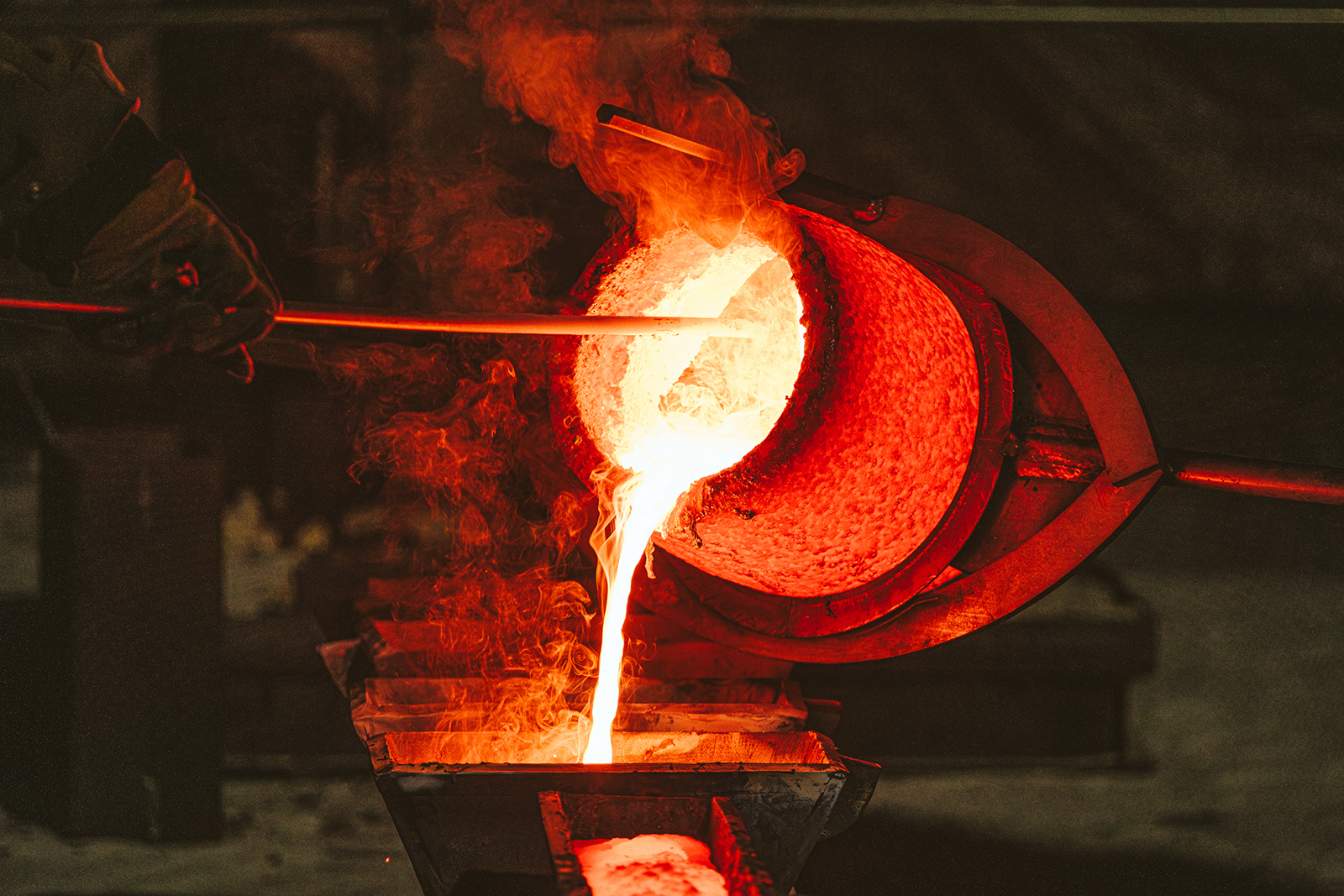
Molten bronze produced by melting Charlottesville’s monument of Robert E. Lee is poured from a hot crucible into ingot molds, Oct. 21, 2023. Photo © Eze Amos
The infamous torchlight march — which featured neo-Confederates and neo-Nazis shouting racist and antisemitic slogans such as “Jews will not replace us!” — took place on the UVA campus across the street from an interfaith worship service. The following day, a multifaith coalition of clergy and other faith leaders attempted to block the entrance to Emancipation Park, where the far-right rally was slated to take place. Protesters eventually shoved clergy out of the way, taunting the faith leaders throughout the day.
That afternoon, when a white nationalist barreled his car through a column of counterprotesters, killing one and injuring many others, clergy rushed to the scene to offer what support they could.
Since then, Confederate-related symbols have been removed from public places across the country, including from sacred spaces, with church leaders voicing concerns about racial injustice.
In September, the Washington National Cathedral unveiled its new stained-glass windows that replaced earlier panes honoring Lee and Confederate Gen. Stonewall Jackson. The new additions, titled “Now and Forever” and designed by artist Kerry James Marshall, depict Black protesters carrying signs that say “No Foul Play” and Fairness.”

The Washington National Cathedral unveiled four newly created and installed stained glass windows on Sept. 23, 2023. The previous windows were removed in part due to controversy over the Confederate figures that were featured in the images. Photo courtesy of Washington National Cathedral
Cathedral officials started considering replacing the windows after the 2015 slaying of nine people at Mother Emanuel African Methodist Episcopal Church in Charleston, South Carolina, by a white supremacist who was seen in photos brandishing the Confederate flag. The old windows were ultimately removed in the wake of the Unite the Right rally in Charlottesville.
In 2021, the Cathedral of the Rockies in Boise, Idaho, replaced a stained-glass window honoring Lee with an image of Bishop Leontine T.C. Kelly, the first African American woman bishop elected in the United Methodist Church. The decision about creating a new window was made around the fifth anniversary of the Mother Emanuel massacre. Church leaders said their plans were solidified further after the 2020 killings of George Floyd, Ahmaud Arbery, and Breonna Taylor sparked Black Lives Matter protests.
As for the Charlottesville statue, Schmidt said the melting was simply the first step in a process she expects could take several years.
“We have a lot of work to do,” she said. “This is the end of the beginning.”

